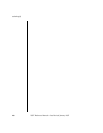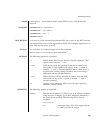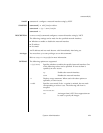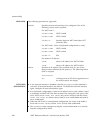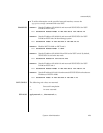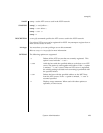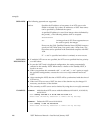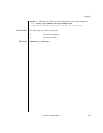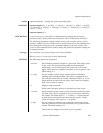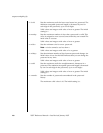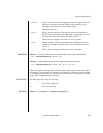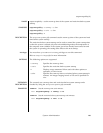
setntp(8)
176 XSCF Reference Manual • Last Revised January 2007
OPERANDS The following operands are supported:
EXTENDED
DESCRIPTION
■ If multiple NTP servers are specified, the NTP server specified first has priority
over the others.
■ In case the XSCF unit is duplicated configuration, the setting automatically
reflected to the standby XSCF. When there's a defect on the standby XSCF, it
leads to an error.
■ When you perform this command with "-c add" and "-c del" option, to apply
the specified configuration, execute the rebootxscf(8) command and reset
XSCF.
■ After resetting the XSCF, the time of XSCF will be synchronized with the time of
NTP server.
■ When an NTP server set to XSCF, the time of the domain may be changed. If
necessary, set the time of the domain.
■ The currently set NTP server can be checked by using the showntp(8) command.
EXAMPLES
EXAMPLE 1 Adds the three NTP servers with the addresses 192.168.1.2, 10.18.108.10,
and 10.24.1.2.
EXAMPLE 2 Deletes the NTP server 10.18.108.10.
address Specifies the IP address or host name of an NTP server to be
added or deleted. Up to three IP addresses or XSCF host names
can be specified by delimited the spaces.
A specified IP address is a set of four integer values delimited by
the period(.). The following address form is accepted:
xxx.xxx.xxx.xxx
xxx An integer from 0–255. Zero suppression can
be used to specify the integer.
Do not use the Fully Qualified Domain Name (FQDN) format to
specify an XSCF host name, but specify only a host name. The
host name can be specified in the format that complies with RFC
1034.
If "-c add" is specified and address is omitted, an error occurs.
XSCF> setntp 192.168.1.2 10.18.108.10 10.24.1.2
Please reset the XSCF by rebootxscf to reflect the ntp settings.
XSCF>
setntp -c del 10.18.108.10
Please reset the XSCF by rebootxscf to reflect the ntp settings.



